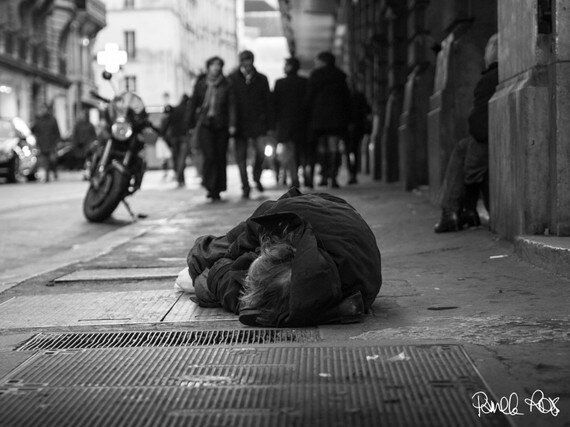
'States Parties recognize the right of every child to a standard of living adequate for the child's physical, mental, spiritual, moral and social development.'
'Convention on the Rights of the Child', UN General Assembly Resolution 44/25 of 20 Nov. 1989
Coinciding with this year's World Human Rights Day on December 10, the final Children Rough Sleepers conference in Brussels will present some of the findings of its two-year study on the rising number across Europe of young people with no fixed abode. Financed by the EU's Daphne Programme, the research project piloted by Criminal Justice Professor Kate Moss of the University of Wolverhampton enjoys the parliamentary support of MEP Cécile Kyenge, who is set to commence conference proceedings. The event concludes a busy agenda over past months of related meetings, workshops, conferences and round table discussions hosted and attended by policy experts, academics and professionals who work in the field within each of the ten participating partner countries.
As testified by the title of their study 'A Comparative Report on Youth Homelessness and Social Exclusion in the Czech Republic, the Netherlands, Portugal and the UK', hitherto the most comprehensive publication on child homelessness in Europe by Joan Smith et al, the research remains nonetheless limited in scope and is already dated (2009). Ensuing developments in the phenomenon of rough sleeping among minors have since necessitated a more contemporary overview of its range Europewide in numeric terms, especially in view of the current economic crisis and considering predictable social ramifications resulting from welfare budget cuts across Europe. Reliable, updated data thus 'provokes' existing services, policies and prevention protocols to keep actively abreast of associated challenges by optimizing ongoing operations as well as by examining new ways of generating winning intervention synergies via the adoption of concerted strategies.
Respecting research on children rough sleepers, or CRS, the target population incorporates a plethora of sub categories. Each represented to varying degrees are unaccompanied foreign minors (including young migrants), annually released figures of children reported missing, youth who have fled domestic poverty, violence or sexual abuse as well as those who have been evicted from home by parents or who come from families with a history of alcohol or substance abuse. Still others have been abandoned or have chosen to leave child protection centres or alternative forms of institutional or foster care.
Understanding rough sleeping among children has necessarily meant taking a close look at how such young people pass their nomadic urban lives, which can oscillate from doorways, park benches and railway platforms to 'sofa surfing' among friends and acquaintances as and when the opportunity arises. Many of them become victims and perpetrators of crime and violence and are easy targets of sexual abuse and exploitation, being also especially vulnerable to predatory adults, gangs and prostitution rings among other dangers.
Yet arriving at an accurate head count of homeless minors brings challenges of its own. Just the difficulties in calculating how many stateless children there are in the UK alone -where their numbers are estimated to be in the region of 120.000- render any sound tally of their presence among the homeless population to be no less satisfactory. These are minors who bear no documentation attesting to their legal status for various reasons which may include running away from guardians who neglected to apply on their behalf for a national insurance number.
Though collaboration by the ten-strong consortium -representing as many member states- spanned just 37% of the EU's territory at project launch, the team's studies soon began to sound the alarm bells.
A few points of concern raised by some of the partner countries follow here :
The consortium's British member reported that circa 140.000 children go missing in the UK each year. Of these, around 70.000 live in homeless households. In Spain, where researchers gauge that there are more minors in protection centres than in any other EU country, 2 million children are thought to be living in poverty. Of these, approximately 33.000 remain dependent upon the state and of the 14.000 children currently living in shelters, 10.000 are under the age of 6. As for Portugal, welfare benefit cuts between 2009 and 2012 resulted in half a million families losing child state allowances, with beneficiaries reduced from 1.8 million in 2009 to 1.3 million in 2012.
From the outset the team's research always privileged the grounded theory method, which forms hypotheses touching appropriate prevention mechanisms only after attentive sifting, selection and editing of this latest data on rough sleeping minors has taken due consideration of aspects peculiar to different national contexts, i.e. upon conclusion of the study. To this end, the team recruited the input and participation of the full panorama of stakeholders operative in the field of minor homelessness, from NGOs to social welfare services and child protection centres as well as from the police and correctional services. Consultation with professionals, academics and key political figures also played a pivotal role, as did interviews conducted with sample groups of the target population itself.
Finally, treating of prevention too, grounded theory was preferred as a means of identifying any existing strategies found to be already working effectively - this also to favour informed and updated policy and intervention recommendations at European level and consequently to ensure an enduring project legacy in concrete application as well as on paper.
For more information on the Children Rough Sleepers Project, visit http://www.childrenroughsleepers.tk/
